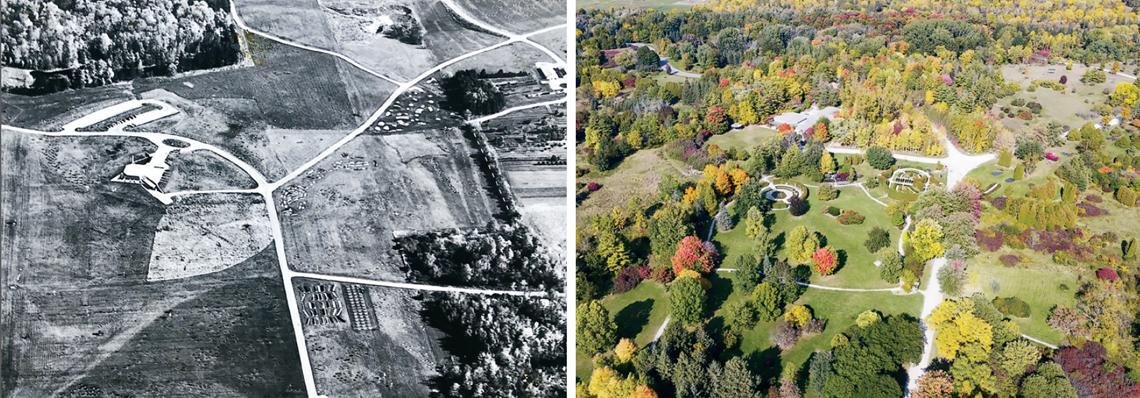A 50-year-old living laboratory

In 1970, the first tree, an ironwood, was planted in the newly established University of Guelph Arboretum.
Today the 400-acre site is almost unrecognizable from its beginnings as farm fields anchored by woodlots planted in the early days of the Ontario Agricultural College (OAC).
Establishing an arboretum had been a dream of many OAC professors, dating back to 1939 when Prof. Leslie Hancock proposed a plan for a small arboretum near Watson Hall at the north east edge of campus.
The dream came to fruition in 1970, when the Board of Governors of the then-six-year-old university agreed to the creation of a “living laboratory.”
The site selected for this nature oasis was a parcel of land purchased for OAC in 1873. Fields that had stayed relatively unchanged for 100 years began to transform.
Today the forest, meadows, ponds and gardens play host to researchers, classes, students doing independent research projects, and nature lovers.
Twelve staff members, about 20 students and 70 volunteers maintain the gardens and collections, and many generous donors support the maintenance of this rare place.
Research conducted in the Arboretum has resulted in more than 100 peer-reviewed publications and many more books, and articles.
The 1,700 kinds of trees and woody shrubs, 40 plant collections and countless gardens and trails are such a feature of campus and the City of Guelph, it is hard to imagine this living laboratory as it was only 50 years ago.
This article was originally published in the LIBRANNI 2021 / Vol. 3
Want to know more about the Arboretum and all it offers? Check out uoguelph.ca/arboretum
 |
Read more:Climate change is a drag
|
 |
Read more:Q&A with a landscape architect |